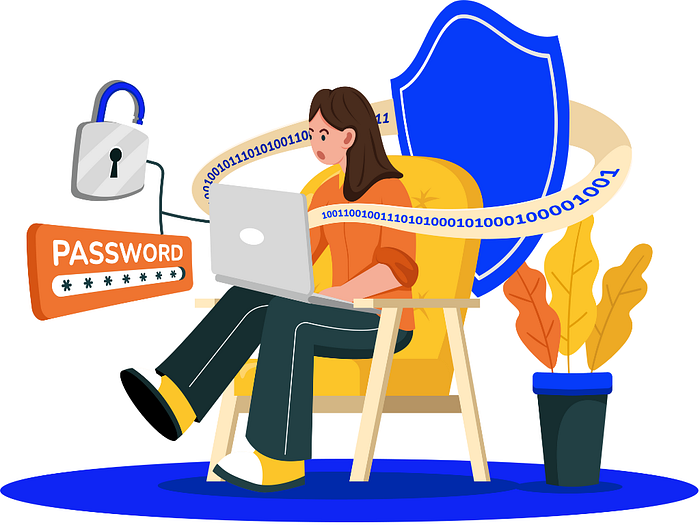So many parents and teachers, are deceived thinking online games are harmless, colorful spaces where children can build, play, and explore together. But beneath the surface of these digital playgrounds, a complex safety challenge is rising one that blends technology, psychology, and trust.
Across various gaming platforms, predators have found new ways to exploit open chat systems, virtual rewards, and social features designed for connection. What begins as innocent interaction can, in rare but serious cases, develop into manipulation or exploitation.
In recent years, global safety regulators have intensified their work with gaming companies to address these risks. For example, Australia's eSafety Commissioner has engaged directly with major platforms to ensure that stronger protections mechanisms are in place for underage users including enhanced parental controls, age verification systems, and restricted chat features.
These actions highlight an important truth: Online gaming isn't inherently unsafe, but safety must evolve alongside innovation. Just as physical playgrounds require supervision and boundaries, digital spaces also need constant vigilance and shared accountability from companies, parents, educators, and cybersecurity professionals alike.
The Psychology of Online Trust: How Digital Grooming Works
Every connection built begins with trust and in the digital world, trust is often the first thing exploited. In online gaming environments, especially those designed for creativity, world building and collaboration, social interaction is a key feature. Players chat, trade, share experiences, and form friendships that can feel genuine. It's this authenticity that predators learn to mimic.
Grooming online doesn't happen through obvious threats it happens through familiarity. A kind word. A shared game. A virtual gift. Online Predators hide behind the rhythm of everyday play, until the line between safe and unsafe becomes blurry to a child.
Unlike traditional cybercrime, this isn't about stealing data it's about manipulating emotions. Predators study digital behavior the same way hackers study code. They learn patterns: which children respond quickly, who seeks validation, who craves attention, who logs in at predictable hours. Then, they adapt using private servers, in-game chats, or direct messages to build reliance and silence doubt.
But what makes this threat so dangerous isn't just the technology it's the psychology. Children have been conditioned to trust digital interactions that feel rewarding, fun, and familiar. When play and danger coexist in the same environment, even the most cautious child can be disarmed by malice disguised as kindness.
The goal isn't to instil fear, it's to build awareness. Parents, teachers, and guardians can't monitor every message or server, but what they can do is teach one vital rule of cybersecurity: Every click, every chat, every connection, trust should be verified, not presumed.

Where the System Falls Short: Gaps in Digital Safeguards
For all the progress the gaming industry has made in moderation and parental controls, the truth is that safety still relies heavily on reactive systems not preventive ones. Reports are investigated after harm occurs. Accounts are banned after damage is done. What's missing is the proactive protection that detects manipulation before it reaches a child's screen.
Most online games today run on community-driven ecosystems. Players can create private servers, host events, develop content and while that creative freedom fuels innovation, it also opens hidden pathways for exploitation. Predators don't hack systems; they exploit trust gaps the spaces left between policy and enforcement, between what's promised and what's possible. They exploit the gray areas.
Even with chat filters and moderation bots, conversations often evolve faster than AI can interpret. Grooming doesn't always use explicit language; it's disguised in mentorship, humor, and slow familiarity.
Meanwhile, age verification remains one of the weakest digital barriers. A birthdate entry box is no match for intent and a motivated adult that can easily pass as a teen with the right tone and avatar.
The challenge isn't technological capability it's industry prioritization. Safety tools exist, but they're often hidden under layers of settings, or implemented unevenly across regions. For many platforms, user experience still prevails user protection.
To make digital spaces safer for children, cybersecurity must shift from compliance to commitment where protection isn't just a checkbox, but a design principle.

The Human Cost: When Digital Harm Becomes Real
Behind every headline about a cyber incident lies a story that never makes the news a child's trust shattered, a parent's confidence broken, a school community quietly shaken. Online harm doesn't just compromise systems; it corrodes safety itself.
When a young person is manipulated online, the damage extends far beyond the screen. Victims often grapple with guilt, shame, and silence feelings that are expertly engineered by the very predators who targeted them. What begins as digital play can evolve into emotional dependency, secrecy, and fear. By the time adults notice the warning signs, the emotional malware has already done its work rewriting confidence, corrupting trust, and isolating victims in invisible ways.
The ripple effect doesn't end there. Teachers and caregivers often blame themselves for "missing the signs." Schools face the impossible balance between technological freedom and digital restraint. And parents already juggling work, life, and care are left trying to make sense of a world where innocence can be compromised by a chatroom invite.
We often talk about cybersecurity in terms of breaches and firewalls, but there's another firewall worth protecting the one around a child's sense of safety. Rebuilding it takes more than stronger passwords; it takes empathy, education, and open conversation.

Reimagining Digital Safety: What Needs to Change
Protecting young people online isn't just about stronger filters or faster moderation it's about rethinking how digital ecosystems are built. For too long, online safety has been treated as a secondary feature a settings tab buried beneath "graphics" and "notifications." But safety shouldn't be optional; it should be architectural.
Developers, educators, policymakers, and parents each hold a piece of the solution:
- Safety by Design: Platforms must bake protection into their architecture, not bolt it on later. Context-aware AI moderation, dynamic privacy defaults, and granular parental dashboards should be baseline features, not paid upgrades.
- Transparency and Accountability: Companies must be open about their content-review processes and response times. "Community guidelines" mean little if violations remain unchecked.
- Education as Prevention: Every digital citizenship or wellbeing program should include lessons in social engineering awareness teaching children that online manipulation is real and recognizable.
- Collaboration, not Isolation: Governments and tech companies must work together, not in silos, to create unified safety standards across all digital spaces gaming, education, and entertainment alike.
- Empowered Guardianship: Parents and teachers need more than advice; they need tools that make monitoring intuitive, not invasive. Cybersecurity should enable trust, not erode it.
Safety online will never be absolute but it can be intentional, and intentional safety begins when we treat protection not as paranoia, but as design.
The digital world children inhabit today will shape the society they inherit tomorrow. Our collective responsibility isn't just to protect them from harm it's to build systems worthy of their trust.

Editor's Note
This article comes from a place of observation and concern not alarmism. Working closely with technology and education has revealed one undeniable truth: digital safety isn't just a technical feature; it's a human responsibility.
Every online space where children learn, play, or connect deserves the same protection we expect in the physical world. That begins not just with software, but with awareness from developers who design platforms, parents who guide, and educators who care enough to ask, "How safe is this space, really?"
The conversation around cybersecurity must evolve from IT jargon to everyday dialogue because safety online isn't just about devices; it's about people.
Best Regards,
Aafiya Irfan
Cybersecurity Professional & Cyber Awareness Educator
AI tools were used to assist in research and language refinement. Final content reflects the author's own analysis and perspective.
